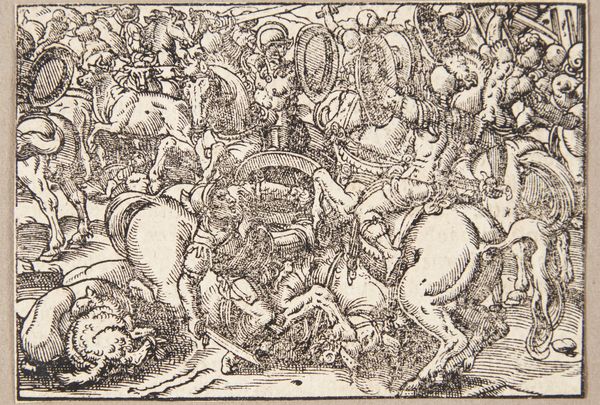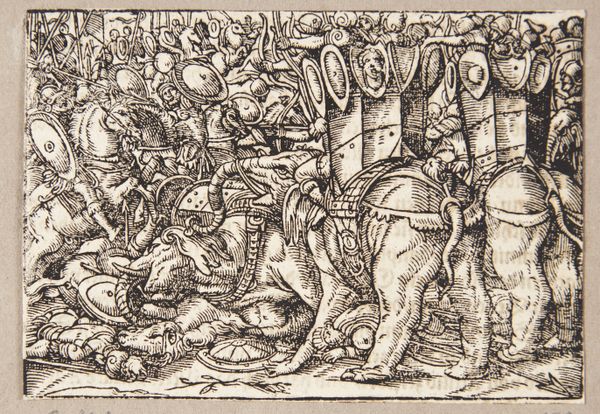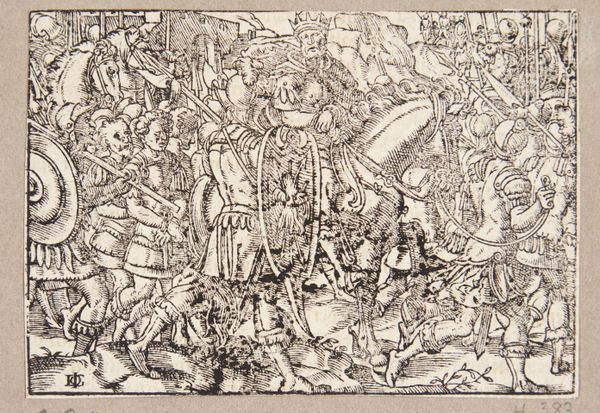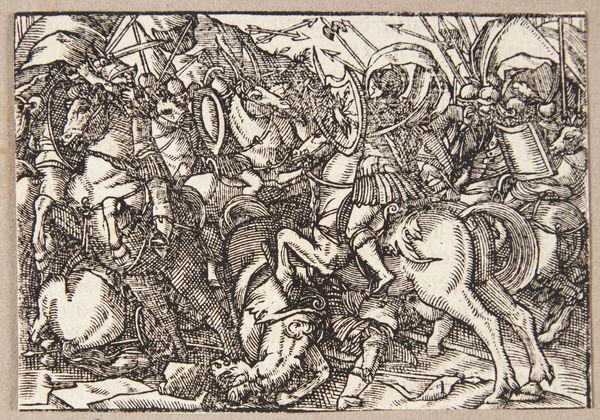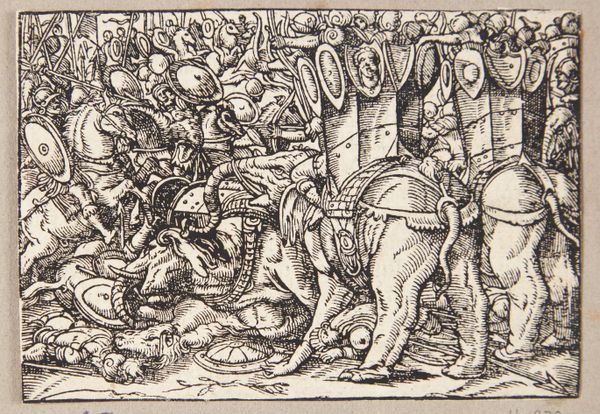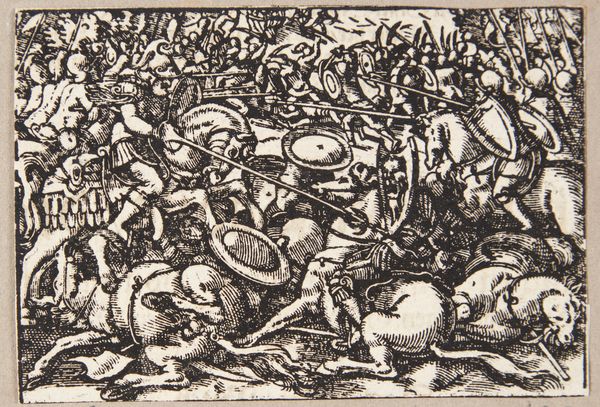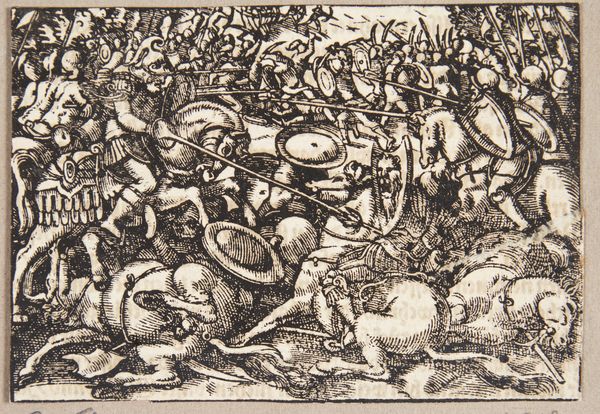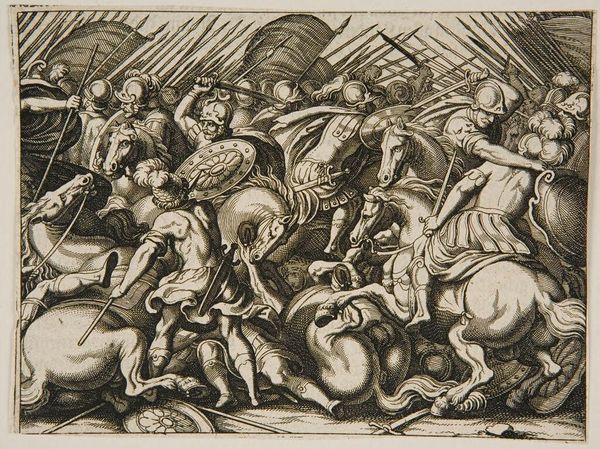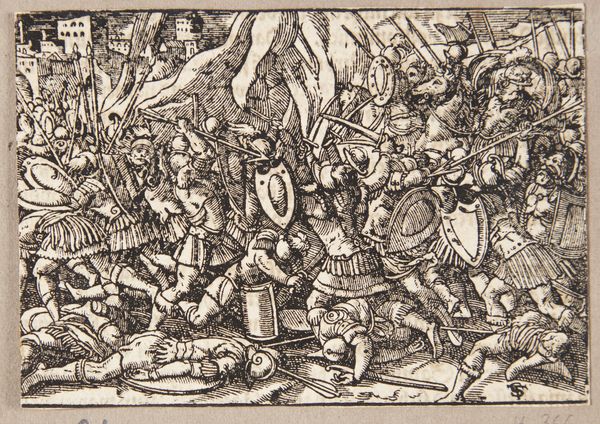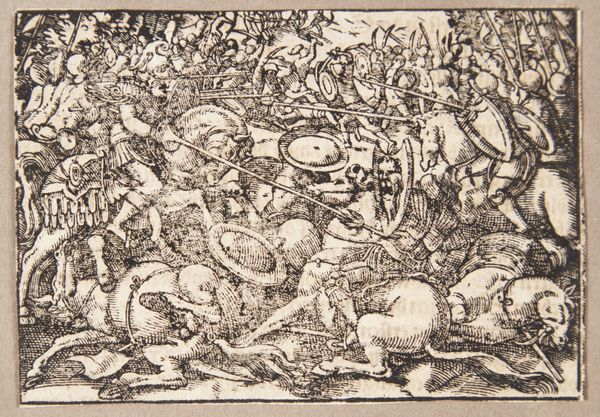
print, woodcut, engraving
#
narrative-art
# print
#
figuration
#
woodcut
#
line
#
history-painting
#
northern-renaissance
#
engraving
Dimensions: 75 mm (height) x 105 mm (width) (bladmaal)
Curator: Immediately, this work assaults the eye with the sheer density of bodies, both human and animal, locked in furious combat. It's incredibly dynamic, though almost claustrophobic in its composition. Editor: This print is entitled "Kamp mellem romerne og gallerne," or "Battle Between Romans and Gauls," created around 1574 by Tobias Stimmer. It's currently housed at the SMK, the Statens Museum for Kunst. As a woodcut and engraving, it exemplifies the Northern Renaissance interest in detail and narrative. Curator: That's interesting, because viewing this through a contemporary lens, what does it tell us about representations of power, conflict, and identity in that period? The sheer aggression conveyed through the figures seems significant. Are there elements of propaganda embedded in it? Editor: Certainly. The politics of imagery were crucial at that time. Prints like these weren't just aesthetic objects. They were ways to disseminate historical narratives and political ideologies. This battle likely holds a deeper resonance with events in Stimmer's time, a commentary on contemporary conflicts presented through a historical guise. The depiction of Romans, the established empire, in conflict with Gauls, often seen as "barbarians," is worth considering. Who are the stand-ins for the contemporary social forces Stimmer wanted to comment upon? Curator: I see your point. Examining those symbols—the armor, the weaponry, even the horses' postures—reveals much about the intended audience. How would viewers have perceived such representations? The black and white starkness adds to its impact, portraying it with such raw energy, and amplifying, maybe even simplifying, the dynamics of the combat for a wider audience. What socio-political factors contributed to the work’s creation and distribution, shaping its reception by both elites and the general public? Editor: The patronage system and the rise of print culture were key. Dissemination of printed images became relatively inexpensive, making visual narratives available beyond aristocratic circles. The historical and religious turmoil of the 16th century definitely shaped its distribution. I think prints had to strike a balance, serving as a tool for social commentary, or, indeed, state sponsored storytelling. This battle's reception depended greatly on those external contexts, which shifted constantly, really, according to religious and political allegiance. Curator: It's striking how effectively Stimmer captures movement in what is, after all, a static medium. You see this and think about not just who these groups represent, but what message does he craft, as to their cultural identities? Who emerges as barbaric here? It makes me rethink assumptions about heroism. Editor: Absolutely. Understanding that historical reception can reveal volumes. Examining its social and cultural impact demonstrates how "Kamp mellem romerne og gallerne" resonates, challenging us even today to reconsider established notions about the history of war and cultural identities.
Comments
No comments
Be the first to comment and join the conversation on the ultimate creative platform.
